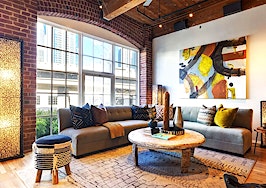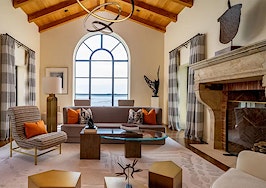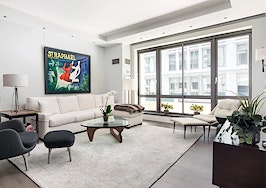Join the exceptional and become a Sotheby's International Realty agent.
Learn More
For design-savvy buyers, the question of what details are most desirable is almost too big to answer. The perfect house has it all. That said, there is a range of trends and styles that have surged to the top of must-have lists in today’s luxury real estate market.
Rather than looking at each design detail one by one, it’s helpful to take a step back and examine the broader themes that these trending spaces share. This allows agents to spot examples in every listing, finding the features that will resonate with clients.
1. Modularity
Now more than ever, buyers are seeking spaces that can move, flex, and effortlessly transform. Doreen Trudeau, Global Real Estate Advisor with Venture Sotheby’s International Realty in Hawaii has seen multiple recent examples.
“Great rooms divided by screens to create privacy, spare bedrooms converted into offices, and areas that function as a workspace by day and a dining room by night,” lists Trudeau. “The need to create secluded workspaces, especially with more than one professional in the house, has owners repurposing nooks and closets.”

Clark Niemeyer
A hundred different homes will achieve modularity in a hundred different ways, from fold-out desks to retractable walls. It’s become key for agents to demonstrate to clients that they can have the best of both comfort and function.
Clark Niemeyer, a Real Estate Professional with Realogics Sotheby’s International Realty in Seattle, notes that flex spaces don’t always have to be within the main home. “There are many creative ways to achieve a dedicated workspace with under-utilized outdoor spaces. Some that I’ve seen include detached office sheds and gazebos.”
Likewise, home fitness installations can be indoor or outdoor. Exercise equipment can be stored unobtrusively until needed—but sometimes, a dedicated space is necessary. “For many buyers, finding a spot for a Peloton bike is an important consideration,” says Niemeyer.
2. Openness

Doreen Trudeau
Fluidity and continuity are as crucial as flexibility when anticipating clients’ top design desires. They are looking for their home to be functional and versatile, but above all, they want their spaces to feel connective and borderless. After being at home for so long, nobody wants to be stuck in a box.
“Buyers are looking for seamless transitions between interior and exterior areas,” explains Trudeau. “Glass doors and negligible window coverings are two ways to create the illusion of larger space.”
There are a number of other ways in which homes can achieve a sense of openness, and Niemeyer points to three in particular:
- Buyers always respond well to high ceilings and floor-to-ceiling windows. These details provide a sense of expansiveness, even if they can’t increase square footage.
- Properly scaling furniture and interior décor when staging can go a long way to promoting openness. Crowding can make a decently sized room feel walled in and closed off.
- The kitchen remains the center of activity. Many buyers tend to assess the openness of the whole home based on how connected this room is to other spaces.
Trudeau agrees, adding that the connectivity of open-concept spaces should extend beyond interiors. “Continuity with the outdoors is critical for kitchens and living rooms. Buyers want easy access to multipurpose outdoor spaces—whether that’s a barbecue, movie theater, recreation area, or patio dining. The focus on outdoor living also magnifies the attention given to gardens and landscaping.”
Color also affects the openness of a home. “It’s so much more important than people realize, and it’s something that, for very little expense, can have a dramatic impact,” says Niemeyer. “Dark rooms tend to feel claustrophobic, so let the light in.”
3. Sanctuary
Finally, luxury real estate buyers are searching for a retreat within a retreat: areas in the home that are designed for joy, escape, and relaxation. “Buyers want an environment that soothes and provides an antidote to the endless conference calls,” says Trudeau. Sometimes, that can be as simple as having a view overlooking the ocean or the pool, but there are a variety of factors and features agents can call attention to.
“Comfort has become paramount as we spend more time in our homes,” says Trudeau. “Most of my buyers still want a clean, linear space—simplicity with an emphasis on durability. Performance fabrics are becoming more popular as we live and work from home. Quality still resonates with the affluent buyer, but in design, less is more.”
For some clients, a separate home spa creates the haven they’re looking for, and even an ensuite bathroom with high-end amenities can serve as an essential sanctuary. But tranquility can also be woven holistically throughout the home with soft, white neutrals and natural, organic materials.
It’s difficult to imagine a luxury listing that doesn’t contain at least a few instances of modularity, openness, and sanctuary. As you connect with buyers, shine a spotlight on the design features that fulfill these three crucial criteria, and show them that you’ve already considered their aesthetic wants and needs.













